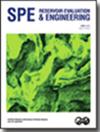概率递减曲线分析在非常规油藏中的应用
IF 1.5
4区 工程技术
Q3 ENERGY & FUELS
引用次数: 1
摘要
一些作者研究了将下降曲线分析模型与随机算法相结合的概率下降曲线分析方法。然而,目前还没有关于将这些概率递减曲线模型应用于美国所有主要页岩盆地的出版物。此外,为了更好地拟合历史生产数据,还建立了几个经验和分析递减曲线模型;与量化与历史数据中的“噪音”相关的不确定性的努力相比,对新模型开发的努力的相关性没有系统的调查。这项工作比较了与确定最佳拟合模型(认知不确定性)相关的不确定性与与历史数据(任意不确定性)相关的不确定性,并提出了一个寻找包含认知不确定性的dca -随机算法组合的程序。我们研究了两种贝叶斯方法——近似贝叶斯计算和吉布斯采样——以及两种频率方法——传统的自举法(BS)和改进的自举法(MBS)。这些随机算法与五个经验DCA模型(Arps、Duong、幂律、logistic增长和拉伸指数下降)和解析Jacobi θ -2模型相结合。我们分析了1800口井的历史生产数据(6个主要页岩盆地各300口井),历史数据长度从12到60个月不等。我们展示了与模型参数均匀分布假设相关的误差,并提出了一种集成信息先验(IP)概率分布的方法,而不是非信息先验(NIP)或均匀先验分布。我们的研究结果表明,贝叶斯方法具有优越的性能,特别是在短预测(12-24个月的生产历史)。我们观察到,历史生产数据的持续时间是最关键的因素。无论使用何种下降曲线模型或统计方法,使用长期后验(长达60个月)都可以使所有概率方法的性能达到水平。此外,我们还发现,在大多数页岩盆地中,有可能找到反映认知不确定性的dca -随机模型组合。这项工作的新颖之处在于为贝叶斯方法开发了ip,并开发了一种系统的方法来确定包含认知不确定性的统计方法和DCA模型的组合。采用开源软件包实现了所提出的方法,使我们的结果可重复,并促进了其在非常规油气藏产量预测中的实际应用。本文章由计算机程序翻译,如有差异,请以英文原文为准。
On the Application of Probabilistic Decline Curve Analysis to Unconventional Reservoirs
Several authors have worked on combining decline curve analysis (DCA) models and stochastic algorithms for probabilistic DCAs. However, there are no publications on the application of these probabilistic decline curve models to all the major shale basins in the United States. Also, several empirical and analytical decline curve models have been developed to fit historical production data better; there is no systematic investigation of the relevance of the efforts on new model development compared with the efforts to quantify the uncertainty associated with the “noise” in the historical data. This work compares the uncertainty associated with determining the best-fit model (epistemic uncertainty) with the uncertainty associated with the historical data (aleatoric uncertainty) and presents a procedure to find DCA-stochastic algorithm combinations that encompass the epistemic uncertainty.
We investigated two Bayesian methods—the approximate Bayesian computation and the Gibbs sampler—and two frequentist methods—the conventional bootstrap (BS) and modified BS (MBS). These stochastic algorithms were combined with five empirical DCA models (Arps, Duong, power law, logistic growth, and stretched exponential decline) and the analytical Jacobi theta-2 model. We analyzed historical production data from 1,800 wells (300 wells from each of the six major shale basins studied) with historical data lengths ranging from 12 to 60 months. We show the errors associated with the assumption of a uniform distribution for the model parameters and present an approach for integrating informative prior (IP) probabilistic distributions instead of the noninformative prior (NIP) or uniform prior distributions. Our results indicate the superior performance of the Bayesian methods, especially at short hindcasts (12–24 months of production history). We observed that the duration of the historical production data was the most critical factor. Using long hindcasts (up to 60 months) leveled the performance of all probabilistic methods regardless of the decline curve model or statistical methodology used. Additionally, we showed that it is possible to find DCA-stochastic model combinations that reflect the epistemic uncertainty in most of the shale basins investigated.
The novelty of this work lies in the development of IPs for the Bayesian methodologies and the development of a systematic approach to determine the combination of statistical methods and DCA models that encompasses the epistemic uncertainty. The proposed approach was implemented using open-source software packages to make our results reproducible and to facilitate its practical application in forecasting production in unconventional oil and gas reservoirs.
求助全文
通过发布文献求助,成功后即可免费获取论文全文。
去求助
来源期刊
CiteScore
5.30
自引率
0.00%
发文量
68
审稿时长
12 months
期刊介绍:
Covers the application of a wide range of topics, including reservoir characterization, geology and geophysics, core analysis, well logging, well testing, reservoir management, enhanced oil recovery, fluid mechanics, performance prediction, reservoir simulation, digital energy, uncertainty/risk assessment, information management, resource and reserve evaluation, portfolio/asset management, project valuation, and petroleum economics.

 求助内容:
求助内容: 应助结果提醒方式:
应助结果提醒方式:


